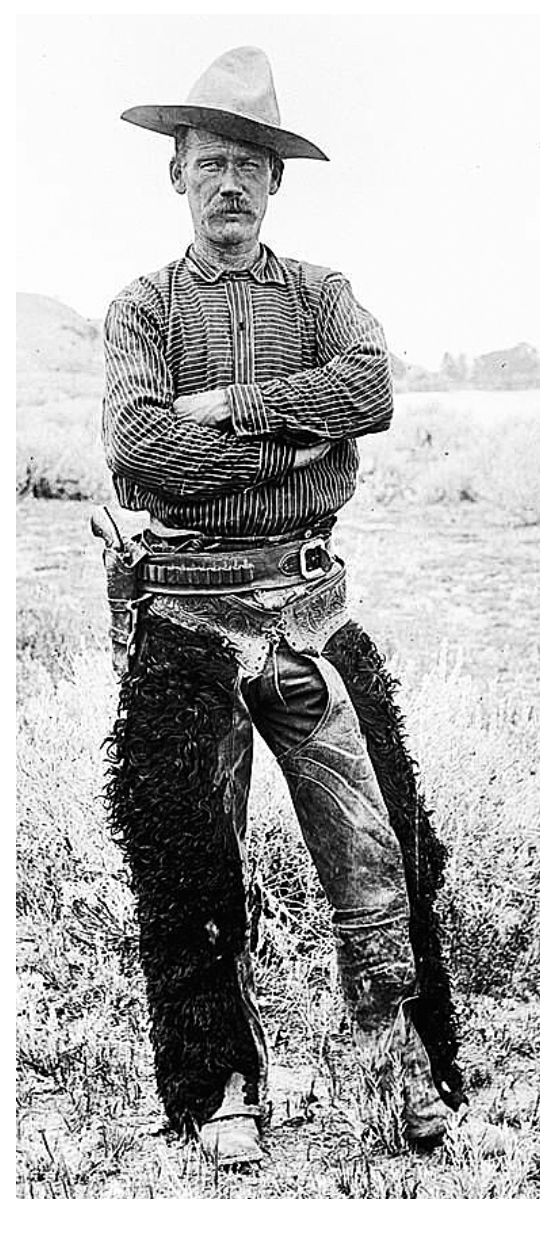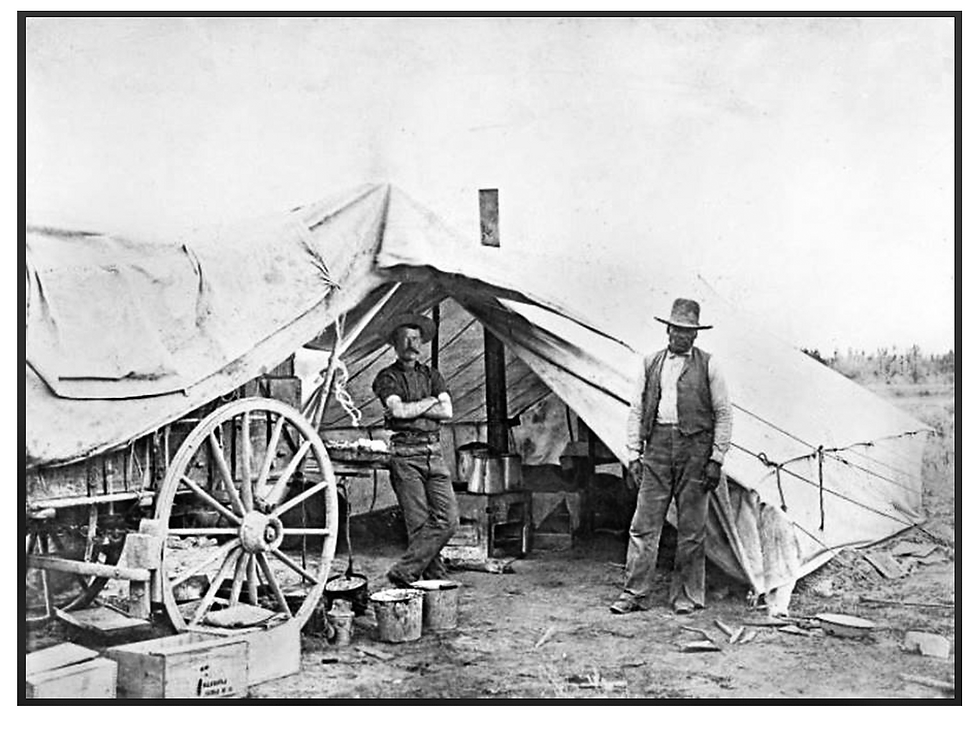Famous and Not Forgotten: Cowboy Poet D.J. O’Malley
- Montana Press

- Oct 26, 2021
- 5 min read
Updated: Sep 16, 2024

Sometimes wholly spontaneous, sometimes sung with original lines fused to existing tunes, D.J. O’Malley’s songs of light-hearted leisure were something his rough-hewn cowpoke cohorts came to admire and his rhymes provided a much-appreciated entertainment after the hard day’s drudgery on the range was complete.
D.J. O’Malley was a legend. Indeed, he was the last survivor of the more than 400 cowboys who attended the first-ever roundup at Miles City, in 1881. In the early 1880s, O’Malley, a boy of 14, had already become “a full-fledged cowboy,” as he described himself.
Much later, in 1939, he was the guest of honor at the first annual Reunion of the Range Riders Association, made up of the range riders who rode the trails in those early days, from 1881 to 1890.
O’Malley’s Montana
The son of a Civil War soldier who died years after sustaining a combat wound, O’Malley was born in New York City in 1867.
He spent his early boyhood in Texas but came to Montana in 1877, the place he would call home for more than forty years. Despite later wanderings across the Midwest, where he died in 1943, he specified that his burial site had to be in eastern Montana.
Many of his earliest memories, O’Malley recalled, were of “two frontier outposts, Fort Dodge and Fort Larned, both in Kansas,” and later outposts in Wyoming and Montana.
According to O’Malley’s journals, his stepfather, Charles White, served in the 19th Infantry in the U.S. Army, completing his enlistment in the infantry at Fort Larned in 1875.
White then went to Fort Sanders in Wyoming where he joined Troop E of the Second Cavalry. In October, 1877 the regiment and the White family moved to Fort Keogh, near Miles City, 130 miles north of the site of the fateful Battle of Little Big Horn; Custer’s last stand had taken place in the summer of the previous year.
Sometime in the mid-1880s, Charles A. White’s family – his stepfather’s own path is murky – D.J., his mother, and his siblings relocated to Miles City. As a boy of 11, O’Malley recalled his first meeting with General Nelson A. Miles, then a colonel, at Fort Keogh. O’Malley went to school with the General’s two children, Sherman and Cecelia, at the fort.
He also met soldier and later showman William “Buffalo Bill” Cody, and was acquainted with other famous scouts and adventurers of that pioneer era, including Luther “Yellowstone” Kelley.
O’Malley was also friendly with a number of young army lieutenants at Fort Keogh, many of whom went on to illustrious careers, including West Point graduate Hunter Liggett, who later would serve as second in command to General Pershing in Europe during World War I.
While at Fort Keogh, O’Malley also made the acquaintance of many of the stalwart Indian chiefs who took part in the Battle of the Little Bighorn in 1876, when the entire Custer command was annihilated by the Lakota, Cheyenne and other Plains Indians. Among these chiefs were Rain-in-the-Face, American Horse, Spotted Elk, (Sioux) Two Moon, Little Wolf, Fire Crow, High Walking (Cheyenne) along with Chief Gall, Many Horses and others.
Working as “A Rep”
O’Malley later recalled that for several years Fort Keogh - strategically constructed at the confluence of the Yellowstone and Tongue Rivers – was the site of “intermittent Indian warfare,” which ostensibly made it “an exciting place for a boy just entering his teens.”
Violence and upheaval, stemming from the removal and resettlement of Indian tribes, were core elements of the day. O’Malley lived at the fort until 1881; much that he observed and internalized would later shape his poetry and journalism.
O’Malley rode for the subsequent 19 years as a cowboy, joining the N Bar N outfit as a horse wrangler at age 14, then working for many years as a cowpuncher-at-large, becoming a “rep.” A rep worked outside the home front of a ranch, steering the direction of cattle and otherwise “looking after the interests of the outfit he represented.”
Here’s how O’Malley described the job in his journals: “A rep had to have good character, reliability, good judgment and tact, because his word was law with respect to calves, branded, beef shipped and many other details of the business. He had to be a good mixer, and he had to know (how to distinguish) brands.”
He was christened with the nickname “N Bar N Kid” and “Kid White” (his step-father’s name was White); and later the “Cowboy Poet,” because of his fondness for writing poetry and songs with a wild, Western relish.

“The Cowboy Poet”
Several country-cowboy music encyclopedias credit O’Malley with a few different compositions that have endured the standard of time. At least four of O’Malley’s poems are said to be well circulated “wherever there is interest in western range songs,” per one source. These are listed as “Sweet By and By Revised,” “A Cowboy’s Death,” “After the Roundup,” and the “D 2 Horse Wrangler.”
According to a mid-century edition of True West, “Sweet By and By Revised” represented one of O’Malley’s initial attempts at writing lines. Said the author:
“He [O’Malley] said that it was probably the third or fourth poem of the forty or more that he wrote while cowpunching. These rough-set of verses apparently furnished the foundation for the ballad often called “The Cowboy’s Dream,” which has been given a place in nearly every collection of American frontier songs.” O’Malley told True West that he received the inspiration for his verses from one of the N Bar N cowhands.
The magazine reprinted these original three verses as jotted down by O’Malley in the early 1880’s.
Tonight as I lay on the prairie
Looking up at the stars in the sky,
I wonder if ever a cowboy
Will get to that sweet by and by.
For the trail to that bright mystic region
Is both narrow and dim, so they say,
While the broad one that leads to perdition
Is posted and blazed all the way.
Now I wonder whose fault that so many
Will be lost at the great final day,
When they might have been rich and had plenty
Had they known of the dim narrow way.
In addition to his penchant for poetry, O’Malley wrote extensively on Western subjects and on incidents in which he was involved.
Last Trail
The last trail drive O’Malley took part in was in 1891, from Texas to Montana. He recalled three trips taken by himself over the trail, with southern cattle from Texas bound for the northern ranges in Montana.
After the N Bar N sold out in 1896, O’Malley worked for various Montana outfits, among them the Bow and Arrow, M Diamond, Half Circle L and L U Bar. He also worked as deputy stock inspector for the Stock Growers Association under one Billy Smith. In 1904 he served as special deputy sheriff at Rosebud, under John Gibb, sheriff of Custer County. Later he was a guard at the State Penitentiary at Deer Lodge.
In 1909, at age 43, O’Malley went east to Eau Claire, Wisconsin, married, and in his later years made his home there.
He didn’t forget Montana, however, and the sentiment was reciprocated. In 1939, O’Malley was the guest of honor at the first annual reunion of the Range Riders Association. In 1941 and 1942, he again was again the guest of honor at the reunions.
At age 70 O’Malley was employed at the tire plant of Gillette Rubber Company, but he was forced to give this up when “his heart began troubling him,” according to his obituary in a Wisconsin newspaper. The final few years of his life were spent raising raspberries on a plot of ground on Crescent Avenue, in Eau Claire.
When he passed in 1943 D.J. O’Malley’s body was taken to Miles City for burial. Not only was he directly linked to so many of the historic characters of what is often categorized as the Old West, O’Malley left his own distinctive footprint upon Montana’s pioneer era.
—Review Staff




Comments